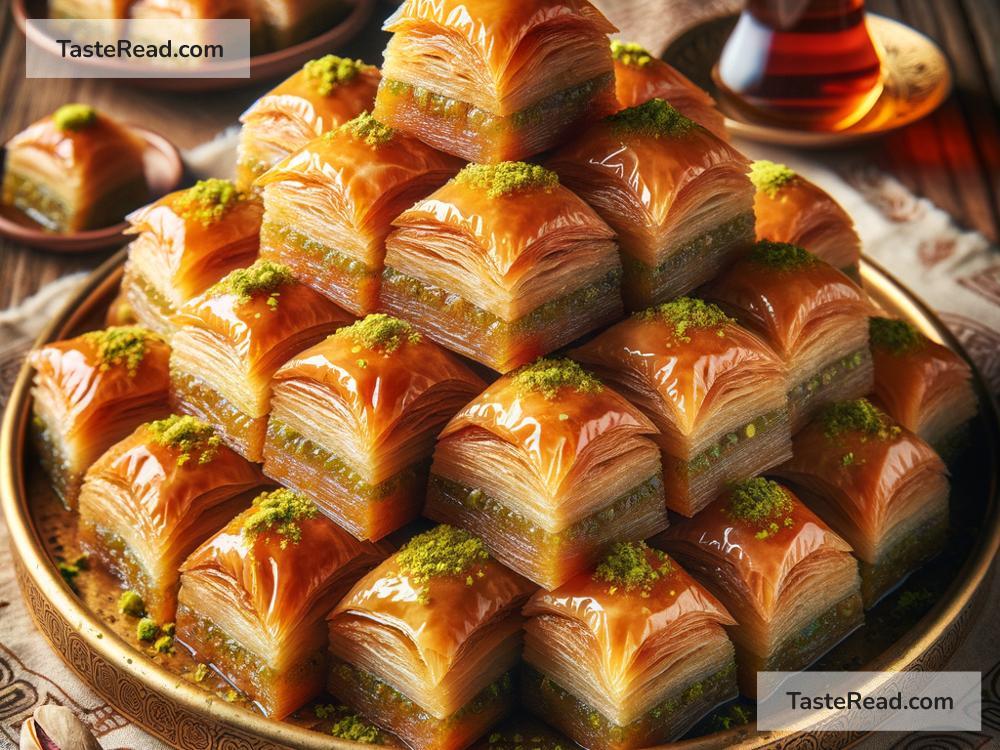The Sweet History of Turkish Baklava
Turkish baklava is one of the most delicious and well-loved desserts in the world. Its flaky layers, sweet syrup, and rich nuts make it a treat that many people enjoy. But behind each golden slice is a long and fascinating story. Baklava has a history that dates back hundreds of years, connecting cultures, traditions, and flavors from different parts of the world.
The Roots of Baklava: Where Did It Begin?
The exact origins of baklava are not clear. Many countries claim to have invented it, including Turkey, Greece, and countries in the Middle East. Some historians believe that baklava may have roots in Assyrian culture around the 8th century BCE. The Assyrians made early versions of baklava using layers of bread dough, nuts, and honey. However, the baklava we know today has gone through centuries of transformation.
Turkey has become one of the countries most famous for baklava, and for good reason. Ottoman chefs perfected the recipe during the time of the Ottoman Empire, between the 15th and 17th centuries. The imperial kitchens in Istanbul, where food was created for sultans and their royal families, began experimenting with this sweet dessert. They refined the technique, ensuring each layer of dough was ultra-thin and perfectly baked, and added pistachios or walnuts to make it extra special. This refined version became the baklava we now know and love.
Baklava in the Ottoman Palace
Baklava was not just any dessert during the Ottoman Empire. It held a special place in royal banquets and celebrations. The sultan would often serve baklava as a symbol of wealth and generosity. The famous “Baklava Parade” was held in the 17th century, where trays of baklava were presented to Ottoman soldiers as a gesture of respect and gratitude.
In the palace, baklava-making was considered an art. Only the most skilled chefs were allowed to prepare it, and every stage of the process was carefully controlled. Making baklava required patience, precision, and years of experience. The dough had to be rolled so thin that it was almost transparent, and the layers needed to be stacked perfectly. Chefs also experimented with syrups, using sugar and rose water to add intricate flavors.
What Makes Turkish Baklava Special?
Turkish baklava stands out because of its unique ingredients and preparation techniques. One of the key ingredients is the “yufka,” a very thin pastry used for layering. Traditional Turkish baklava uses up to 40 layers of yufka, creating a delicate texture that feels light as air.
Another famous ingredient is pistachios. In Gaziantep, a city in southeastern Turkey, baklava is made using high-quality pistachios grown in the region. This gives the dessert a bright, nutty flavor. Some types of baklava also use walnuts or hazelnuts, depending on the region and family recipes.
The syrup used in Turkish baklava is usually made from sugar, water, and lemon juice, unlike some recipes in Greece or the Middle East that include honey. This sugar-based syrup balances the sweetness without overpowering the natural flavors of the nuts and pastry. The result is a dessert that is sweet but not overly heavy.
Baklava Goes Global
As the Ottoman Empire expanded, baklava spread to many countries, including Greece, Armenia, Lebanon, and Egypt. Each region added its own twist to the recipe, using local ingredients or tweaking the preparation methods. Today, baklava is enjoyed worldwide.
Although the recipe varies between countries, baklava still symbolizes hospitality and celebration. It’s often served during weddings, religious holidays, and special gatherings. In Turkish homes, guests are welcomed with tea and a plate of baklava, showing warmth and generosity.
Making Baklava at Home
You might think that making baklava is difficult, and to some extent, it is! But many people enjoy trying their hand at this recipe at home. The key is to have patience. Rolling out the dough thinly can be tricky, but store-bought filo pastry can save time and make the process easier.
To make Turkish baklava, you’ll need filo pastry, chopped nuts (like pistachios or walnuts), melted butter, and sugar syrup. The layers of pastry are brushed with butter and stacked, with nuts sprinkled between every few layers. After baking, the syrup is poured over the dessert, allowing it to soak into the layers. The result is a golden, crispy dessert that’s rich and flavorful.
Where to Find the Best Baklava in Turkey
If you ever visit Turkey, you must try baklava from a local shop—it’s an experience like no other! Gaziantep is considered the baklava capital of the country and is home to some of the best baklava artisans. Many families in Gaziantep pass down their baklava-making secrets through generations.
In Istanbul, you’ll find baklava shops in neighborhoods like Karaköy or Kadıköy, where baklava is made fresh daily. No matter where you go in Turkey, baklava will always be a memorable part of your journey.
A Sweet Tradition That Lives On
Turkish baklava is more than just a dessert. It is a symbol of history, culture, and tradition. From the kitchens of sultans to family tables today, baklava has brought people together for centuries. Whether you enjoy it with tea, coffee, or simply on its own, each bite of baklava tells a story of the love and care that goes into making this iconic treat.
So, the next time you take a bite of baklava, remember its rich history and the journey it has traveled to reach your plate. It truly is a timeless dessert that connects the past with the present, one flaky layer at a time.


